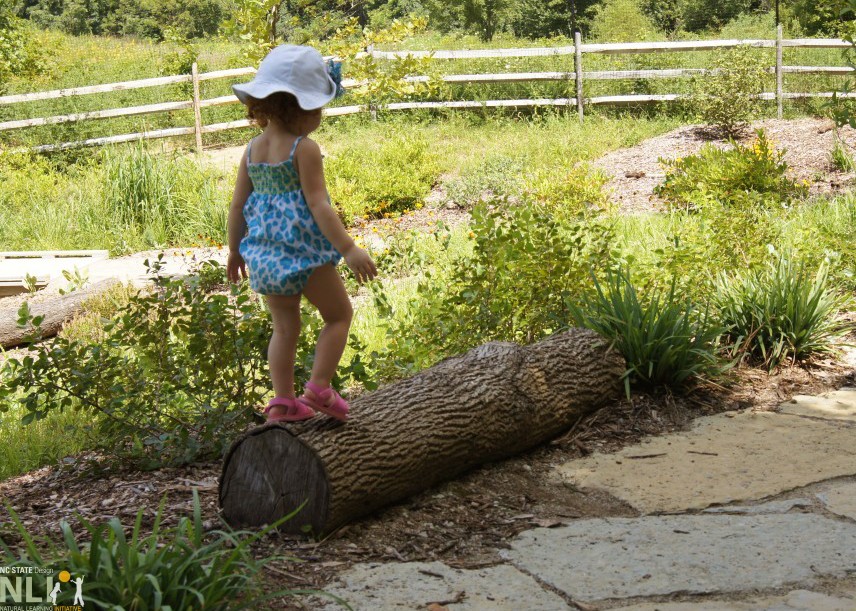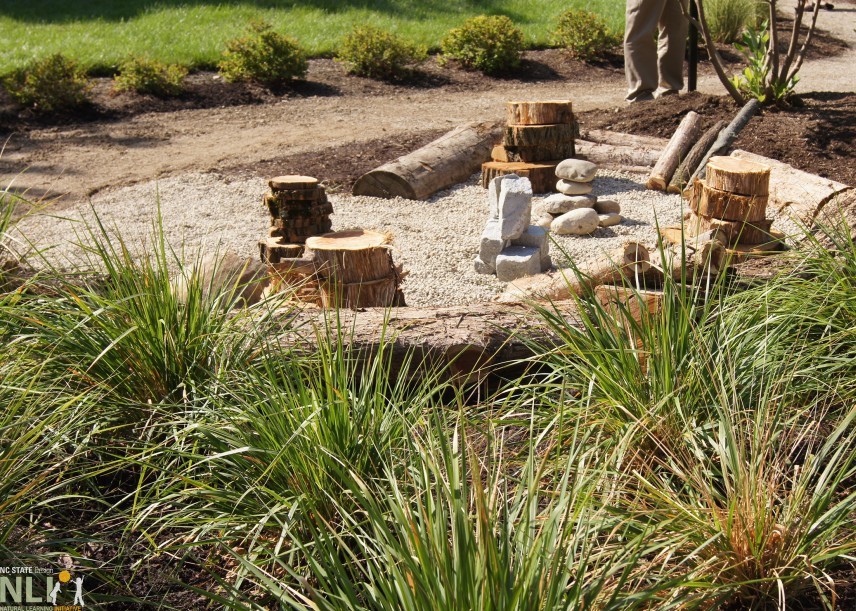The Green Desk
Inclusion of Natural Elements in the Play Yard
Are large stones and/or rocks considered tripping hazards inside the fenced area?
“We are thinking of using them as borders to create a garden space or perhaps as part of our outdoor learning environment activities and décor.”
From the North Carolina Rated License Assessment Project:
If the stones are used as a border and are not in a traffic path this would not be considered as a tripping hazard for the ERS.
From the North Carolina Division of Child Development and Early Education:
For borders, if the stones or rocks are easily visible then they are not considered tripping hazards. Providers need to think about where they are being placed versus placing in pathways. Tripping hazards are reduced or eliminated by ensuring that the rocks are visible color wise – not having dark rocks that blend in with the surroundings so children might be less likely to see them.
From the North Carolina Children’s Environmental Health Branch:
This would not be an environmental health issue.
What are some important considerations related to using small stumps to create a stepping activity?
How can this provide resilient surfacing? We have concerns about splintering?
From the North Carolina Rated License Assessment Project:
Any gross motor equipment (either natural or man-made) that is over 18 inches high must have protective surfacing and adequate fall-zones. If children are encouraged to climb or step onto stumps, the stumps should be steady and well secured to reduce the risk of falls. When children play on stumps or rocks of any size, supervision is key in reducing crowding, pushing, or other unsafe behaviors. If the stumps are obviously splintering and intended to be used for play activities, this could be considered as a safety concern for the ERS, depending on severity.
From the North Carolina Division of Child Development and Early Education:
The requirement for surfacing is for any equipment that is over 18”. However, you also need to consider if the stumps are secured by size or placement so that children aren’t going to jump on to one that is tippy and then dumps them over on to another stump or child. Splintering would be a violation for DCDEE if serious. Maintenance is key.
From the North Carolina Children’s Environmental Health Branch:
This would not be an environmental health issue.
Can we have stumps on our playground with lichens or small mushrooms growing on them?
Our playground has children between the age of 2.5 years and six years that play on it.
From the North Carolina Rated License Assessment Project:
We would defer to Environmental Health on this topic.
From the North Carolina Division of Child Development and Early Education:
We would defer to Environmental Health on this topic.
From the North Carolina Children’s Environmental Health Branch:
This would not normally be recommended since some mushrooms are poisonous and could be hazardous if ingested. If the mushrooms have been identified and are not poisonous, it would be fine.
Overview from the North Carolina Outdoor Learning Environments Alliance:
We are hearing more and more frequently that children today are not spending time outdoors. A strong concern is that children are not learning first hand about nature and are not connected with the natural world. They may see nature in books or on television, but they often do not experience it themselves. This is one of many reasons to include natural elements in the play yard. Children learn from their play and they play with all that is in their environment. Adding natural elements to the outdoor space can bring learning to real life opportunities – science, math, and literacy skills emerge as children observe, notice, count, and become exposed to new vocabulary as they are immersed in the natural world around them.
Natural elements also provide the loose parts for the outdoor classroom – leaves to gather, rocks to turn over, even rain to measure! Using natural shade provisions such as trees or arbors with vine coverage ensures that children will notice the change of seasons as leaves grow, drop, vines flower, leaf out, and change over time. If your outdoor space is lacking in natural elements, it is easy to bring in transportable items such as rocks, hay bales, stumps, other items that children can see, touch, smell, manipulate and learn about.
*This post is from a series of FAQ about child care outdoor learning environment regulations in North Carolina. Please see the intro post, here, for more information.




